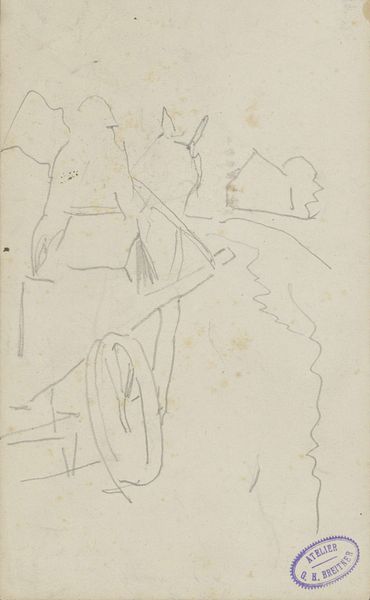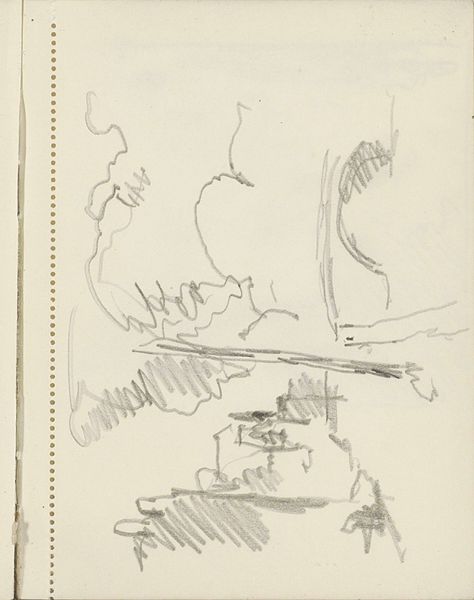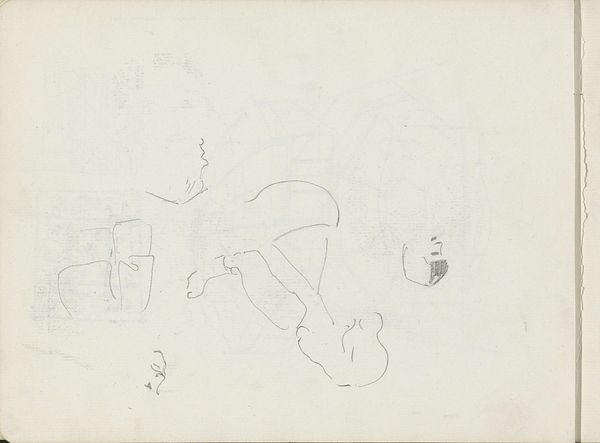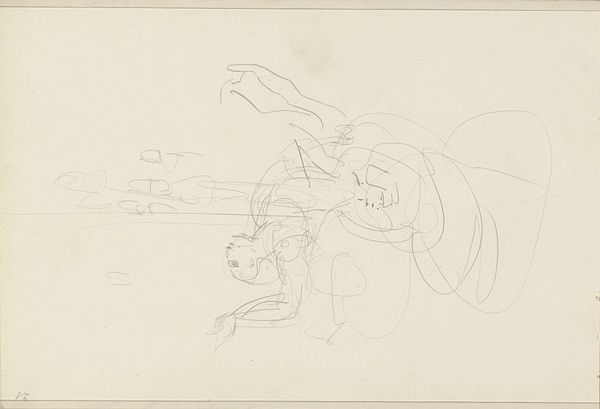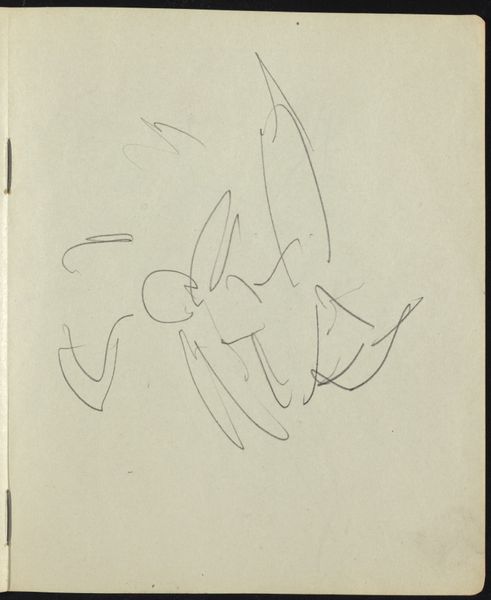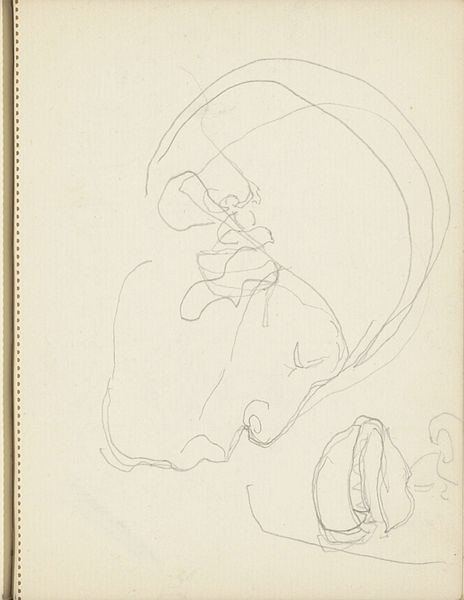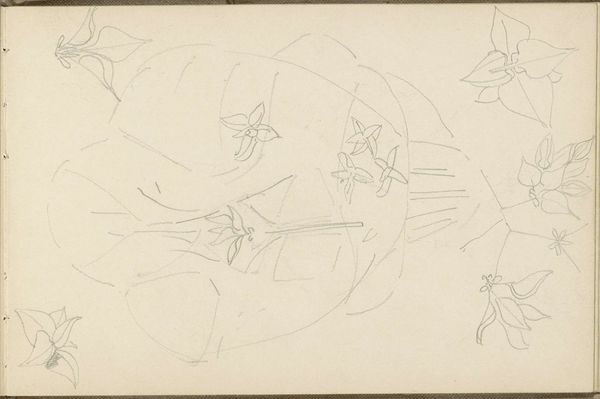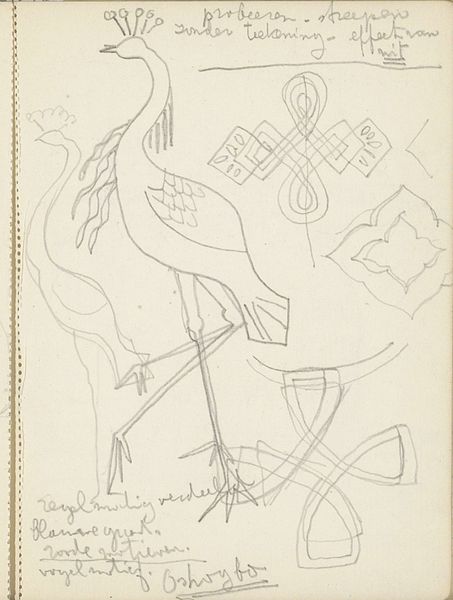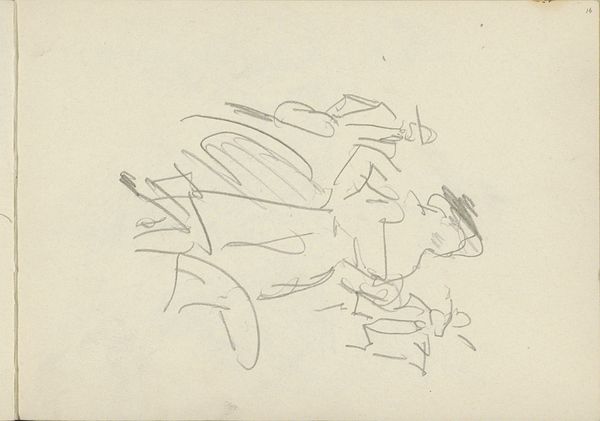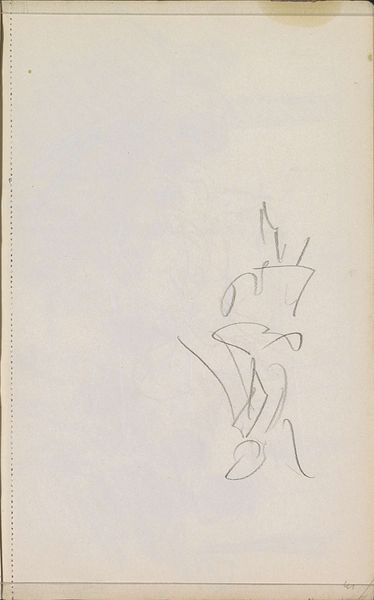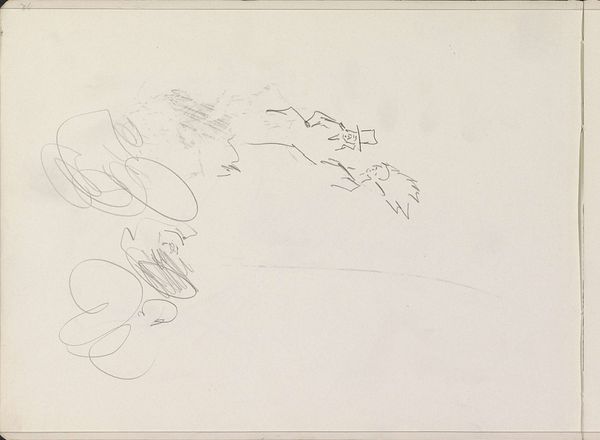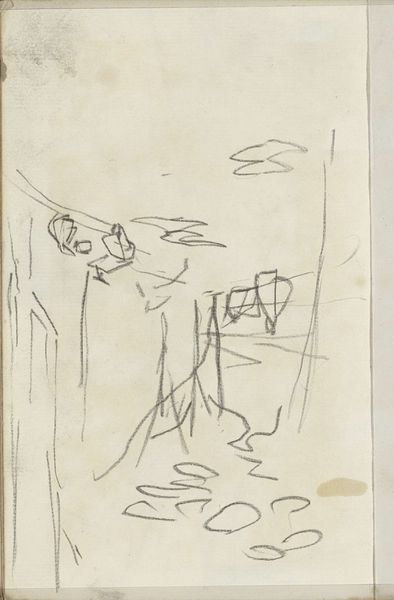
drawing, paper, pencil
#
drawing
#
landscape
#
figuration
#
paper
#
geometric
#
pencil
Copyright: Rijks Museum: Open Domain
Curator: Cornelis Vreedenburgh created this pencil drawing, titled "Straat met figuren bij een poort," around 1936. It's currently held here at the Rijksmuseum. Editor: Immediately striking. So spare, so ephemeral. The wispy lines suggest figures, but the absence of detail gives them an anonymous, almost ghostly quality. Curator: That ghostliness might be precisely the point. Vreedenburgh was active during a period of great social upheaval. How do you see this reflecting that reality? Editor: The apparent lack of finish actually highlights the handmade quality. I can almost see the artist sketching rapidly, perhaps trying to capture a fleeting moment, and the roughness itself feels authentic and immediate, even urgent. Curator: Interesting you focus on that authenticity. Art historians have long debated whether the sketch represents a deliberate style or merely an unfinished piece. The looseness allows for varying interpretations. One reading is that the lack of concrete form represents a lack of societal structure. Editor: For me, it evokes that precarious balance. It’s about making the most of a disposable material like paper with a basic tool, pencil, to represent very precarious figures in public space. I wonder who were they? Who were these people and what was the economic background? Curator: Precisely. He frequently depicted urban scenes, capturing the mood of city life and its evolving social dynamics, particularly how they felt under increasing political tension. Editor: In that respect, I wonder if Vreedenburgh were making comments on consumer culture at the time and if paper as a media played into those notions? Was he referencing mass media printing in any way? Curator: Well, even if unconsciously, the very act of depicting transient life with such impermanent means highlights how these issues reflect societal transience. And its ability to morph under the socio-political and industrial complex. Editor: It's a stark reminder of the individual amidst historical currents, of labor on material, captured with swift marks, raising questions about labor, material worth, and historical change. Curator: A fascinating look at Vreedenburgh's work through a socio-historical lens. Hopefully, this piece gives you a new avenue to look into artwork history through a combined cultural and material outlook.
Comments
No comments
Be the first to comment and join the conversation on the ultimate creative platform.
